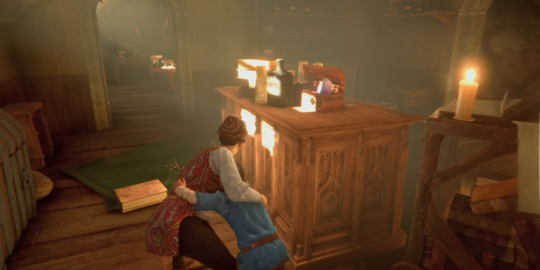
Experience the captivating journey of siblings Amicia and Hugo in the breathtaking action-adventure game A Plague Tale: Innocence. Created by Asobo Studio and published by Focus Home Interactive, this game will immerse you in a poignant narrative and harrowing encounters like no other. Set during the Hundred Years’ War in plague-ridden France, this narrative-driven game combines historical realism with supernatural elements, creating a profoundly moving experience that delves into themes of family, survival, and the monstrous nature of humanity. This article explores the intricate layers of darkness in the game's storyline and themes, offering a comprehensive understanding of its narrative depth and emotional impact.
Rich Historical Context
The game is deeply rooted in the historical context of the 14th century, a time ravaged by war and disease. The Hundred Years’ War provides a backdrop of continuous conflict, which shapes the hostile environment Amicia and Hugo navigate. This historical accuracy brings an added layer of realism to the story, enhancing the themes of desperation and survival. Furthermore, the Black Plague, which sweeps through the land, serves as a central element, symbolizing both the literal and figurative decay of society. The plague’s representation in the game goes beyond historical facts, imparting a sense of pervasive dread that permeates the narrative.
Survival Against Overwhelming Odds
.png)
At its core, A Plague Tale: Innocence is a survival story. Amicia and Hugo, both children, are thrust into a merciless world, hunted by the Inquisition and surrounded by the infected. Their journey is a continuous struggle against overwhelming odds. The game mechanics, such as stealth, resource management, and puzzle-solving, reinforce this theme. Players must use cunning and the environment to navigate through dangers, which mirrors the characters' need to adapt and persevere. This constant tension highlights the resilience and resourcefulness of the human spirit, particularly through the eyes of children.
The Power and Pain of Familial Bonds
Family is a central theme in A Plague Tale: Innocence. The bond between Amicia and Hugo is the driving force of the narrative. Initially, Amicia is reluctant to take on the responsibility for her much younger brother, but as the plot unfolds, their relationship deepens, illustrating familial love and sacrifice. This dynamic is tested repeatedly, emphasizing the strength and sometimes the burden, of family ties. Their journey also brings them into contact with other characters who exhibit or betray familial loyalty, thereby exploring different facets of this theme.
Moral Complexities and Innocence Lost
.png)
The game does not shy away from presenting moral ambiguities. Amicia and Hugo are often faced with dire choices that question the morality of their actions. From sacrificing others to save themselves to the use of lethal force for protection, these decisions complicate their characters’ sense of morality, contributing to their psychological development. This blurring of moral lines, coupled with the horrific circumstances they endure, catapults them from the innocence of their youth into a premature, fraught maturity.
The Antagonism of Religion and Superstition
Religion and superstition play significant roles in the narrative, often portrayed as dual sources of conflict and comfort. The Inquisition, as the main antagonist, uses religion as a tool for control and persecution, casting a dark shadow over its spiritual role. Conversely, the siblings encounter various characters who rely on superstitions and folk beliefs as a means to cope with the horrors of their reality. This juxtaposition serves to critique the potential for religious institutions to become corrupt while also showing how cultural beliefs can provide a psychological refuge from harsh realities.
Implications of the Supernatural

While grounded in historical realism, the game introduces supernatural elements that are both terrifying and symbolic. The swarms of rats, as carriers of the plague, are depicted with an almost otherworldly horror, becoming a relentless force of nature that devours everything in its path. The supernatural portrayal of these rats can be seen as a manifestation of the characters' internal fears and the external chaos of their world. This blend of real and fantastical elements brings a deeper emotional resonance to the narrative, emphasizing the omnipresent nature of fear and death in their journey.
Conclusion
A Plague Tale: Innocence uses its dark historical setting not only to entertain but to provide profound commentary on the human condition. Through its complex characters, moral dilemmas, and thematic depth, the game offers a rich, immersive experience that challenges players not only to survive but to reflect on the essence of humanity during periods of despair. In navigating its harrowing landscapes, both literal and metaphorical, players uncover layers of narrative depth that are as instructive as they are engrossing.
